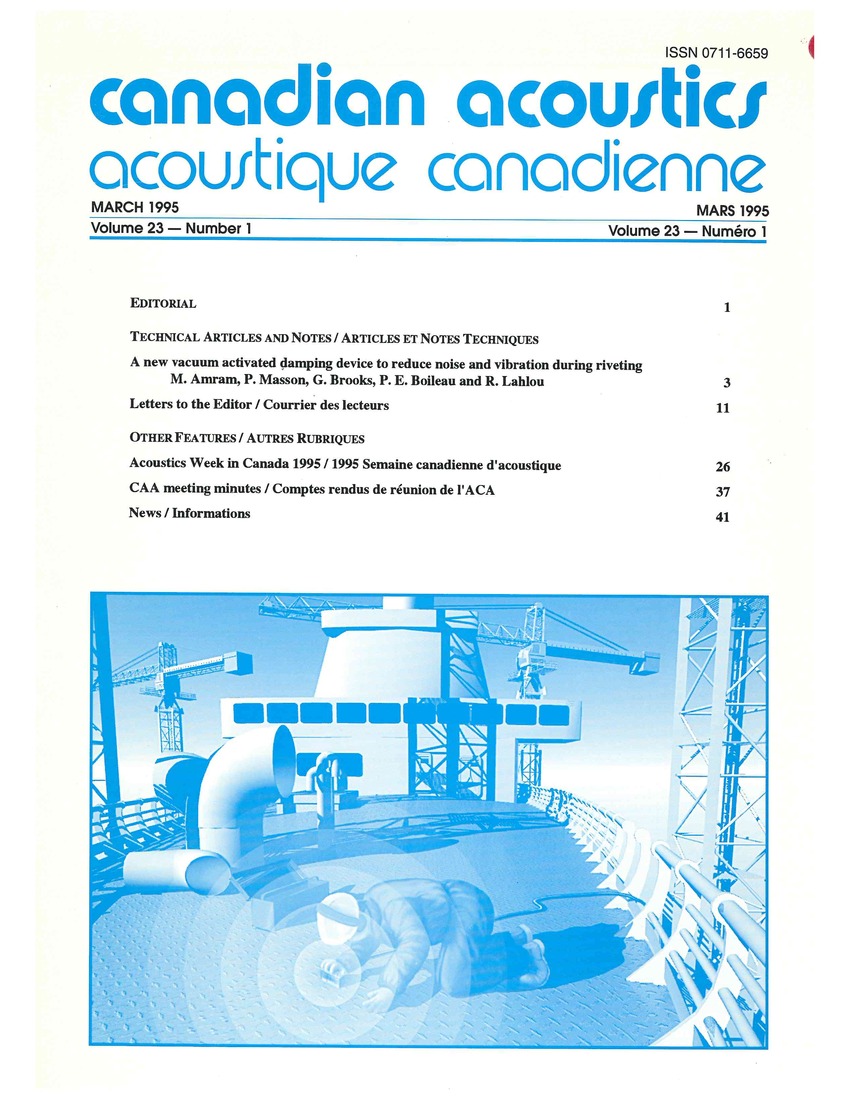A New Vacuum Activated Damping Device to Reduce Noise and Vibration During Riveting
Abstract
An actual part of an airplane fuselage was mounted on a jig in an anechoic chamber in order to evaluate, among other things (see paper of P.E.boileau and Al. ), the performance of a vacuum-activated damping device called Vac Damps (damping material glued on aluminium back plate with a rubber seal all around that plate, in order to fix it on the fuselage by means of a partial vacuum underneath). Riveting with 4 mm diameter rivets requires two operators: a "riveter", handling the rivet hammer and a "bucker",pushing on the reaction "bucking bar" to upset the rivet. The first goal of this study was to evaluate the noise attenuation provided by two Vac-Damp panels fixed one above and one below a row of rivets. The other goal was to assess the overall efficiency of such a device in lowering the exposure to hand-arm vibrations, mainly at the "bucker’s" hand. Differences established on a LeqA basis between data with and without the two Vac-Damp have shown an attenuation of about 5 dBA on the global noise radiated at both "riveter’s" and "bucker’s" ears. Furthermore, the hand-arm vibrations on the handle of the rivets gun, and mainly on the "bucking bar" held by the " bucker" ,have also been reduced by approximately 2 to 3 dB through the use of the Vac-Damp panels. We should emphasize that for this particular study, only the radiated noise attenuation was considered. For more information on hand-arm vibration attenuation see ref. ,Additional Files
Published
How to Cite
Issue
Section
License
Author Licensing Addendum
This Licensing Addendum ("Addendum") is entered into between the undersigned Author(s) and Canadian Acoustics journal published by the Canadian Acoustical Association (hereinafter referred to as the "Publisher"). The Author(s) and the Publisher agree as follows:
-
Retained Rights: The Author(s) retain(s) the following rights:
- The right to reproduce, distribute, and publicly display the Work on the Author's personal website or the website of the Author's institution.
- The right to use the Work in the Author's teaching activities and presentations.
- The right to include the Work in a compilation for the Author's personal use, not for sale.
-
Grant of License: The Author(s) grant(s) to the Publisher a worldwide exclusive license to publish, reproduce, distribute, and display the Work in Canadian Acoustics and any other formats and media deemed appropriate by the Publisher.
-
Attribution: The Publisher agrees to include proper attribution to the Author(s) in all publications and reproductions of the Work.
-
No Conflict: This Addendum is intended to be in harmony with, and not in conflict with, the terms and conditions of the original agreement entered into between the Author(s) and the Publisher.
-
Copyright Clause: Copyright on articles is held by the Author(s). The corresponding Author has the right to grant on behalf of all Authors and does grant on behalf of all Authors, a worldwide exclusive license to the Publisher and its licensees in perpetuity, in all forms, formats, and media (whether known now or created in the future), including but not limited to the rights to publish, reproduce, distribute, display, store, translate, create adaptations, reprints, include within collections, and create summaries, extracts, and/or abstracts of the Contribution.


